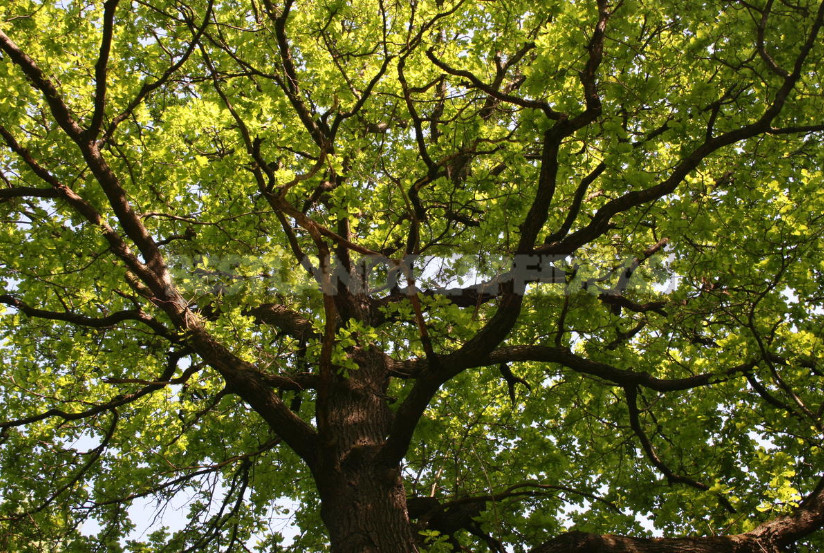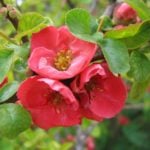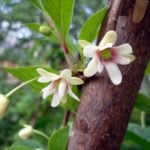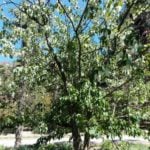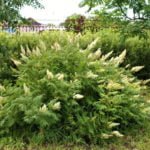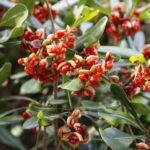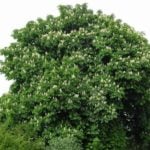Indispensable residents of suburban areas are always trees: without them, gardening cottages as if not completed. Some of them accrue to us in the inheritance from former owners, others we planted by ourselves. It is trees and shrubs that give the site the necessary volume, become a kind of living filling.
Some of them often become favorite family trees. In this status are mainly conifers: Pinus, Larix, Abies and others.
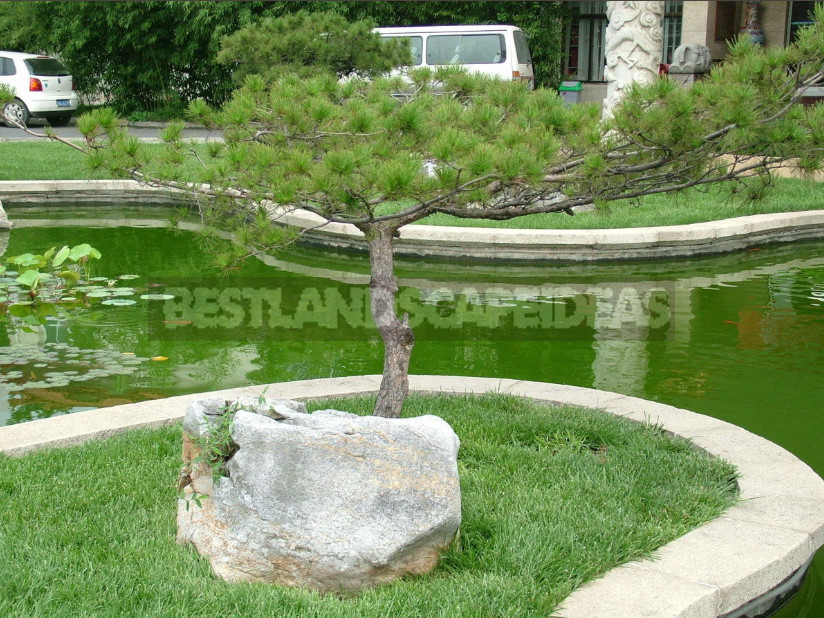
The choice of coniferous trees with openwork crown is much more diverse in the South. It includes a spectacular exotic plants: Cryptomeria, southern pine species: P. wallichiana, P. bungeana, and others.
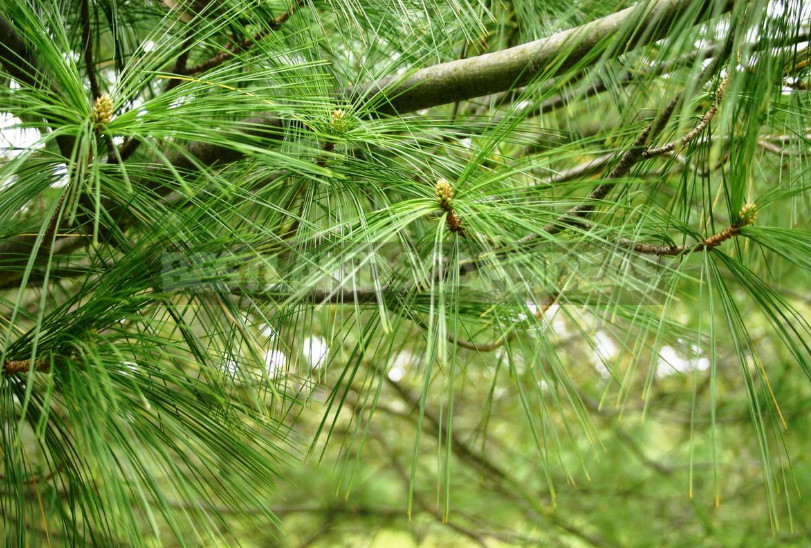
Today we will talk about decorative trees with openwork crown, understanding under the latter the image that is created by branches in the upper part of the plant.
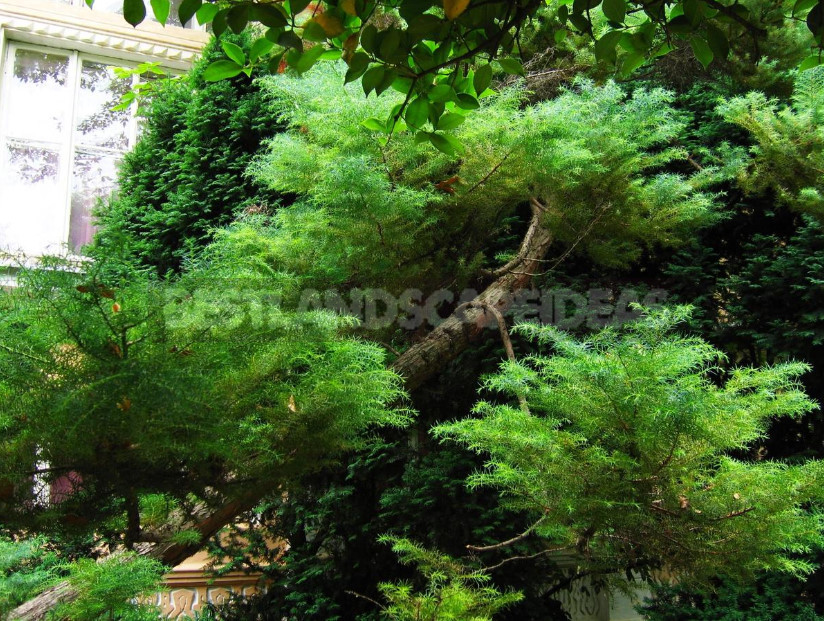
In contrast to softwood, which is decorated with openwork crown needles throughout the year, deciduous trees and delight in the beauty of the foliage only in the spring and summer-autumn period. Additional decoration of the crown of conifers – cones, the cones are usually, foliage – flowers and fruit.
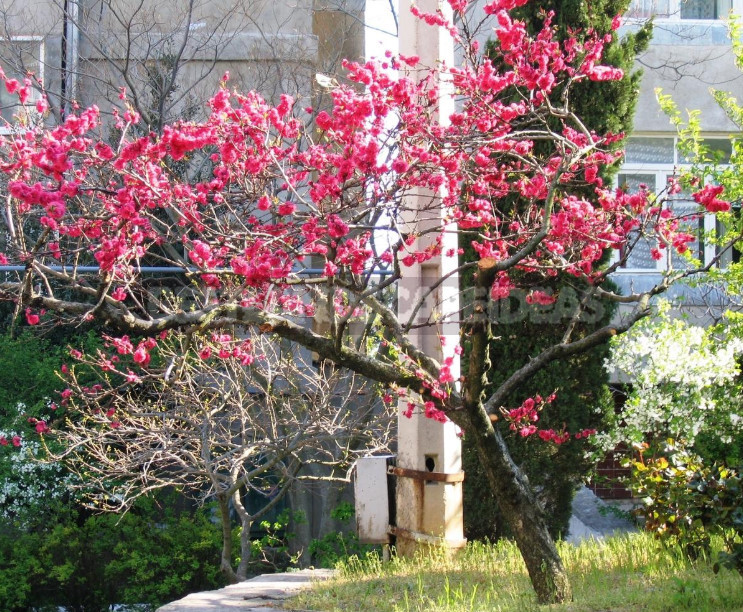
Often in winter, when there are no leaves, we pay attention to the shape of the crowns, wondering their diversity, which is created by nature or man. Decorated with leaves and flowers, the crown of the trees becomes a powerful dominant, overshadowing the beauty of even the brightest flower beds.
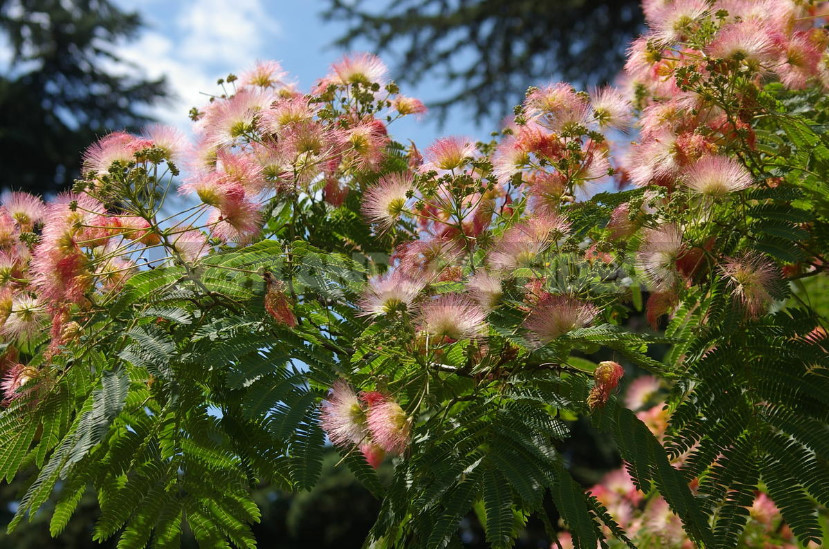
In autumn, an interesting kind of crown often depends on the spectacular fruiting.
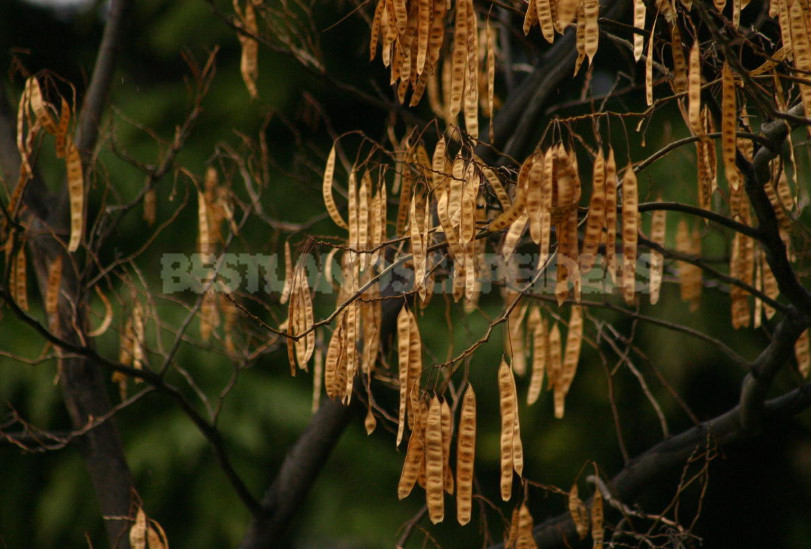
Speaking of openwork crown, we mean trees with sparse branching; simple, pinnate, lobed or dissected leaves, giving a light and elegant texture. Often these crowns do not have a clear outline, miss a lot of sunlight (more than 50%), increasing the play of light and shadow. They do not close the building and small architectural forms, on the contrary – often complement them, emphasizing the advantages.
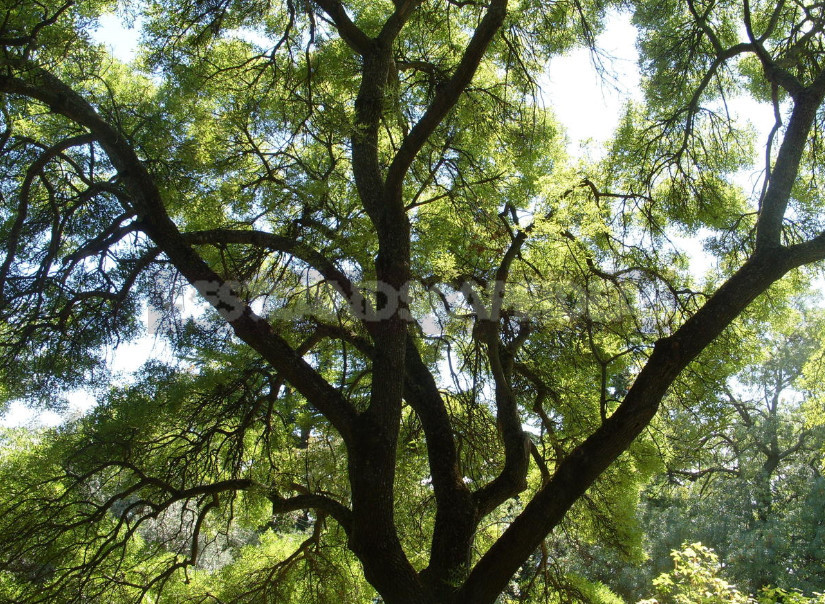
Located on the periphery of the crown (the ends of slightly branched branches) small or narrow oblong leaves (Salix, Elaeagnus angustifolia, Olea europaea and others) give a through crown.
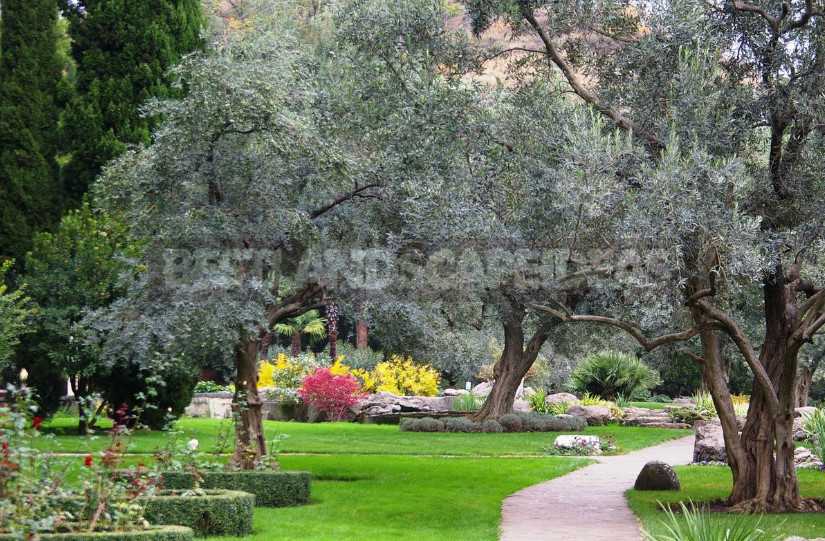
Large leaves on little branched branches are also able to give a loose crown. A good example is Catalpa, Paulownia tomentosa and others.
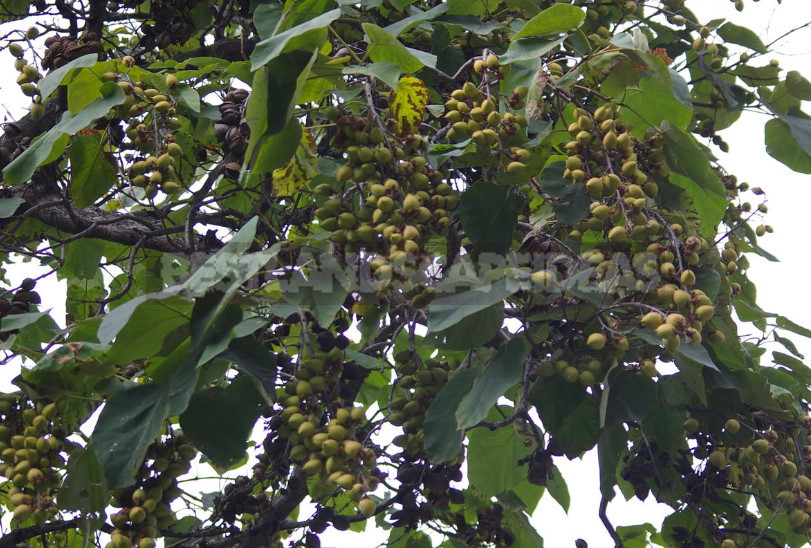
Loose curtain of leaves create decorative forms of woody plants with thin filamentous or highly dissected leaf blades, for example:
- Alnus incana ‘Laciniata’;
- A. glutinosa ‘Laciniata’, ‘Imperialis’;
- Betula pendula ‘Laciniata’, ‘Gracilis’;
- Rhus typhina ‘Dissecta’, syn. ‘Laciniata’;
- Acer saccharinum ‘Laciniatum Wieri’;
- Caragana arborescens ‘Lorbergii’;
- Frangula alnus ‘Aspleniifolia’ and others.
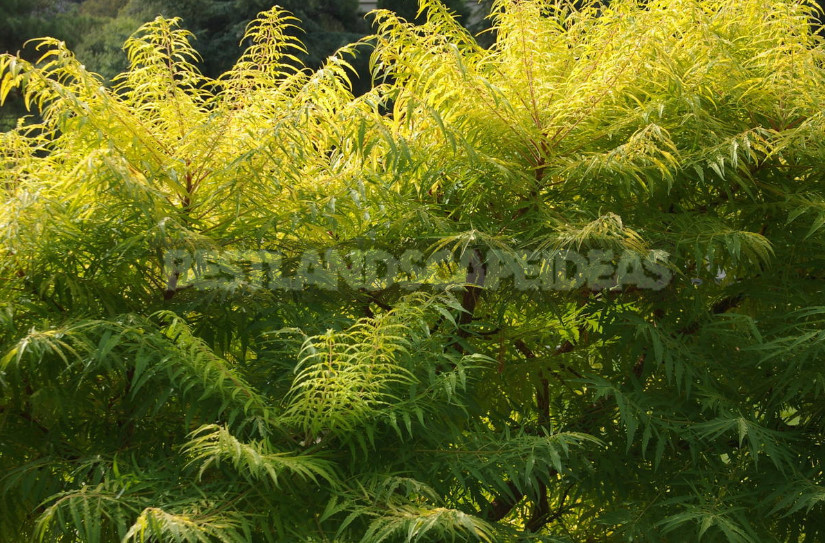
A very beautiful crown of Acer ginnala and A. tataricum. It is these species that emerge in the memory when it comes to wood with openwork crown. Not far behind maples and ash trees: Fraxinus ornus ‘Angustifolia’, F. excelsior ‘Jaspidea’, ‘Pendula’, F. ornus.
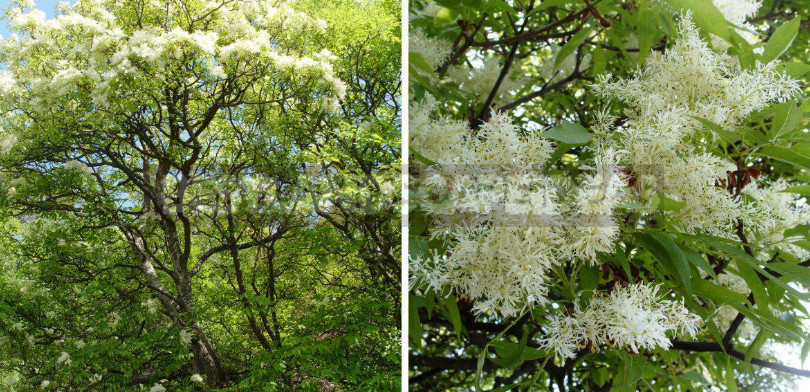
Autumn is the luxurious open-knit Rowan: Sorbus aucuparia, S. domestica, similar to them, Sorbaria sorbifolia, and others. And this is not all decorative wood with openwork crowns, which today offer nurseries. The list can be endless, I have selected only some of the most spectacular species, representing the species and decorative forms.
Even though I have selected only 5 species, but what!
Albizia julibrissin
Forgive me, the Northern inhabitants, but the tree is more beautiful and delicate than this deciduous beauty of the family Leguminosae/Mimosaceae, I have not seen in my life.
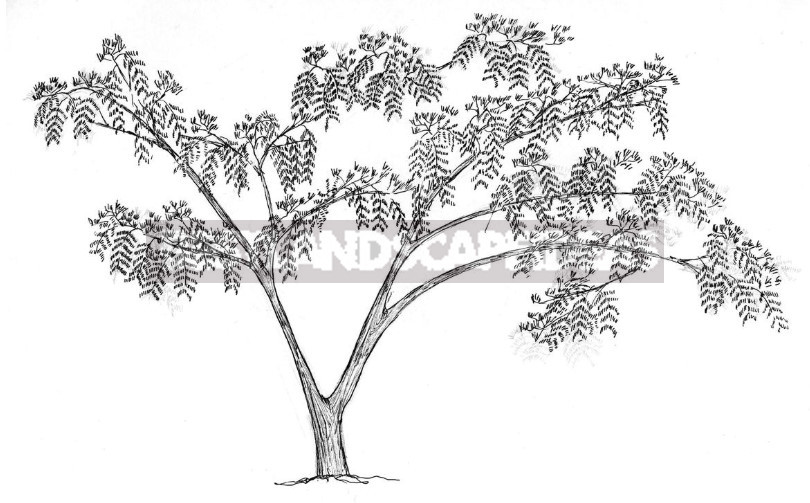
It is up to the height of 6-10 m, a width of about 4-6 m. she has a beautiful leaves with a length of 30-45 cm, which bloom later, in late April. But its main beauty lies in the pink head inflorescences with a delicate peach aroma, appearing in July and August. Many (including me) find it attractive in fruiting. Not hardy. In this case, the most vulnerable tree bark, prone to frost (cracking). Likes open Sunny locations with well-drained soil.
Sambucus racemosa ‘Tenuifolia’ and ‘S. nigra’Laciniata’
The beauty of the openwork leaves of these two decorative forms of different types of elderberries fascinates at first sight.

The first is up to 1 m high and up to 2 m wide, with leaves heavily dissected into thin blades. A second height of 2-3 m. Both hardy in the middle lane, well and grow quickly in fertile friable enough to wet soils; S. nigra is less demanding to them. Shade-tolerant.
Acer palmatum ‘Dissectum’
One of the most beautiful laced maple trees with umbrella-shaped crown and delicate shoots.
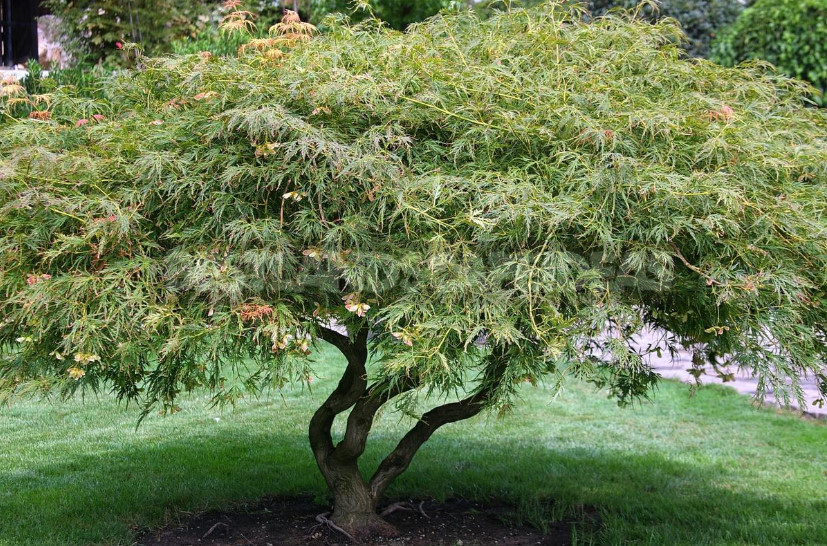
It is 1.5 – 2 m high. Leaves with deeply dissected blades.In the middle lane freezes. Responsive to the introduction of complete fertilizer at the beginning of the growing season. Often a certain form of crown support shortening of vigorous shoots.
Paulownia tomentosa
Deciduous tree with a large spreading round crown up to 15 m. Incredibly beautiful in bloom!
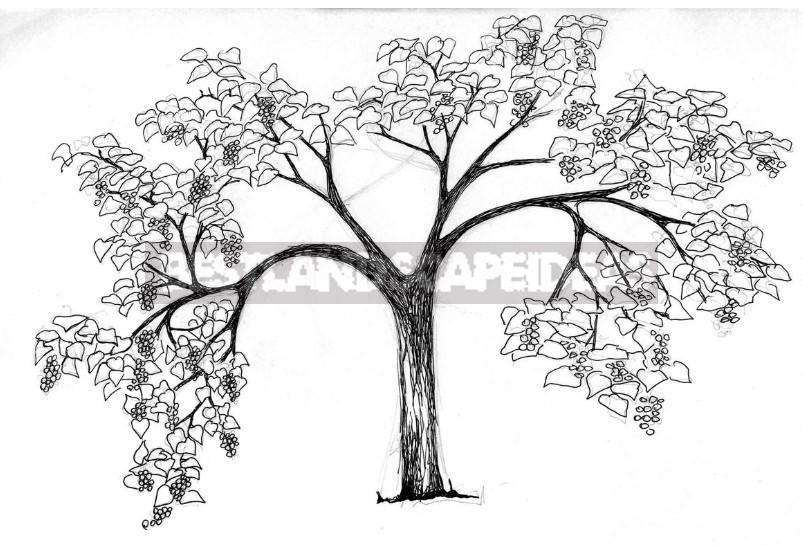
Spectacular large cordate leaves, beautiful purple bell-shaped fragrant flowers, collected in the final large panicles up to 25 cm, blooming in April-may. Paulownia begins flowering already in 4-5 years. Grow faster. Quite unpretentious. Pretty hardy. Watered and fed it only in the first 5 years after planting, and then only in the dry summer, although the best development and flowering is possible only on moderately moist, deeply drained fertile soil.
Tamarix tetrandra
Large shrub up to 5 m with small scaly sessile leaves. Small pink flowers, collected in the apical panicles, bloom in the spring and resemble beads on the branches.
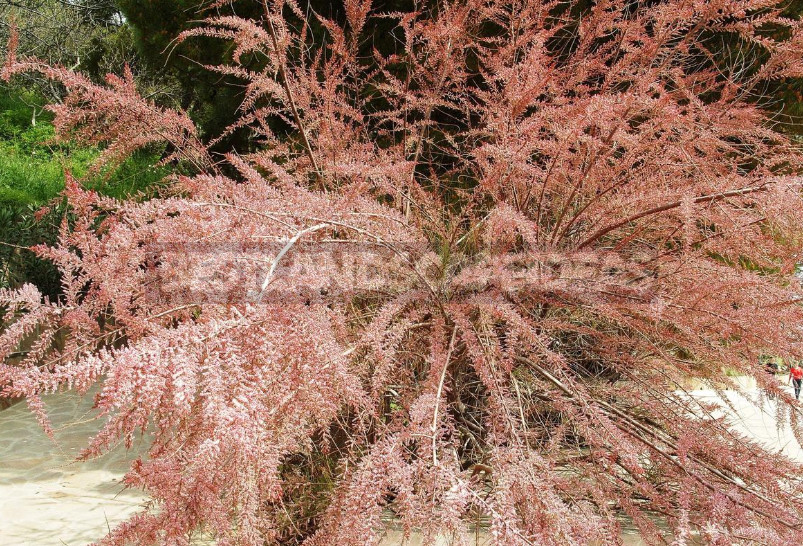
Frost in the southern zone of horticulture; in the middle zone grows with a slight freezing of young shoots. Light, undemanding to soil, can grow in poor. Drought-resistant, but when watering in hot dry summers, it is luxurious.
Also, if you inherited such a large healthy trees with delicate foliage, as Gleditsia triacanthos, Sophora japonica, Robinia pseudoacacia and R. viscosa, and others, save them for beauty and years of comfort. You have to be careful with invasive (introduced and harmful to the aboriginal, that is, the local plant communities) hollow trees: Acer negundo, South Ailanthus altissima.
And what trees and shrubs with openwork crown grow in your country?
